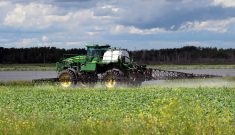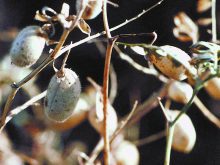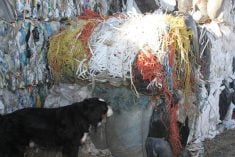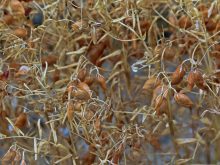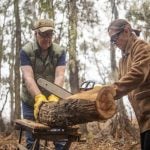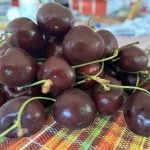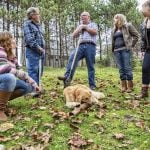GREENFIELD, Ind. – Visitors can be a welcome reprieve from the isolation of farm life.
That’s why the Roneys are happy to greet the 5,000 folks that come to their farm every Saturday in the fall.
“It gets crazy out here,” said Helen Roney, one of the operators of a multifaceted farm business located east of Indianapolis.
“It’s controlled chaos.”
Tuttle Orchards is a family run business that produces 22 varieties of apples as well as field vegetables, pumpkins and bedding plants.
Read Also

Regulatory model “broken” in Canada – says BASF
Taking a decade to assess the safety of glufosinate-ammonium, a herbicide branded as Liberty that has been used by farmers for years, embodies what’s wrong with Canada’s regulatory system, BASF said.
The family sells its own raw and processed products as well as beef and pork from neighbouring farms in a dairy barn built in 1895 that has been converted into a country grocery store.
Retail sales have been steadily rising over the past 10 to 15 years. The store’s cash registers rang up an estimated 80,000 to 90,000 transactions last year.
“It’s approaching a $1 million business at this point and we may go over that this year,” said Tom Roney, who jointly owns the business with his brother, Mike Roney.
The apple and cider side of the business, which accounts for about 40 percent of revenues, benefited from a nasty frost that crippled the U.S. Midwest about three years ago.
Apple prices doubled and haven’t come back down. Fuel and chemical costs have also risen but not to the same extent.
“We’ve been very fortunate. We’ve done well,” said Tom, a bachelor.
His role on the farm is to grow the apples, manage the cold storage, produce the cider and take care of the bookkeeping on the orchard that was started by his grandfather in 1928.
Mike is responsible for greenhouse and vegetable production.
Helen co-ordinates school tours that lure 6,000 to 8,000 children to the farm every year.
Ruth Ann, the oldest of Mike and Helen’s seven children, runs the grocery store and is responsible for advertising and maintaining the company website. Most of her siblings help out as well.
Eighty-two years ago, the farm was primarily a wholesaler to stores in Indianapolis. Today, the retail outlet accounts for 85 to 90 percent of the farm’s revenues.
Mike said the shift to a retail and agritourism focus was his father’s idea.
He wanted to capitalize on the 1970s sentiment of consumers wanting to reconnect with the land.
“That was an era when people
wanted to come to the farm and pick their own product. It was almost faddish.”
The family decided to increase its capital investment after Tom graduated from nearby Purdue University, finished a stint in the navy and came back to work on the farm. They borrowed money and invested in more land and buildings.
Today, they produce 160 acres of apples, tomatoes, sweet corn, squash, cucumbers and other fruits and vegetables.
“We’re very diversified in what we do now,” said Mike.
Sometimes the operation feels too diversified.
“It seems like an endless amount to keep track of. That is not easy to do,” said Mike.
Helen said the workload can be overwhelming, especially at this time of year. She is working on the farm and juggling her school-aged children and household chores.
Ruth Ann estimates she logs 60 hours each week running the store during fall.
Things slow down for about two months in the winter, allowing the family to catch up on paperwork, pruning and planning. Traffic increases in spring when people start buying bedding plants.
While fall can be busy, it is also the most rewarding time of year because that’s when urban families visit the farm.
Helen said they try to keep their prices affordable.
“I have seven children of my own and I understand that if you go somewhere, you don’t want to spend $200 just to treat your family to something.”
She estimates it would cost $60 for a family that size to come out to the farm and experience pony rides, hay rides, the play area, have lunch and eat caramel apples for desert.
“To me, that’s very reasonable,” said Helen.
Tom feels that agriculture is under attack by environmental groups.
“If they had their way, a lot of those groups would like to see agriculture go back about 75 years and we could farm with horses.”
He said farmers are charged with feeding the world and they need modern technology to do it.
Tom considers agritourism a critical part of the operation but it doesn’t contribute much to the bottom line.
“I’ve always taken that as a real responsibility,” he said.
He sees it as a way to connect with schoolchildren, teachers and consumers about the food they eat.
“We actually get to deal with the ultimate consumer. Very few farmers have that opportunity,” he said.



